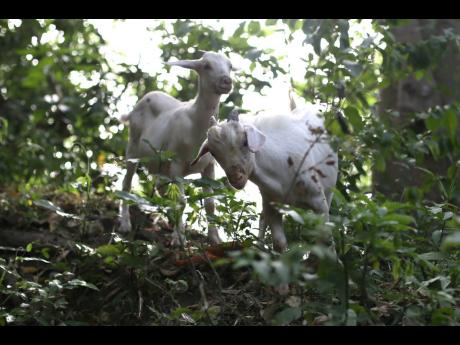Goat farmers get help to manage stress in animals
Nine small ruminant farmers across the country are benefiting from a project facilitated through partnership between the Rural Agricultural Development Authority (RADA) and the Langston University in Oklahoma, United States.
The Mitigating Effects of Heat Stress in Caribbean Animal Production Project, valued at US$30,000 (approximately $4.7 million), began in May. The initiative also involves collaboration with the College of Agriculture, Science and Education.
Dr Ryszard Puchala, lead researcher from Langston University, said it is the fourth project being facilitated through partnership with RADA.
"This project [is] funded by the United States Department of Agriculture Center of Excellence, Global Food Security and Defense. We want to target especially small farmers and specifically small ruminant farmers," he noted.
Puchala said the undertaking will benefit farmers from the parishes of St Thomas, St Catherine, Clarendon, St Elizabeth, St James and St Ann.
"We're setting up the equipment and trying to figure out the most appropriate intervention for those parts. The aim is also to install heat index monitors for the animals as well as installing just regular ambient temperature and relative humidity meters," he informed.
Puchala said that farmers will be provided with digital thermometers and thermal imaging cameras, which are critical in managing heat stress in animals.
A heat-stressed goat will sweat, have open-mouth pant, and experience an increase in respiration rate.
Puchala said the devices quickly evaluate whether an animal is prone to heat stress.
"Thermal imaging is a new technology where we analyse the temperature of the whole body. It uploads the data to the cloud and there is a special programme that analyses the heat distribution in the animal's body. When you take a picture of the animal, it shows you thermal imaging and it shows you the lighter areas on the animal to show where heat is being emitted from," he pointed out.






































